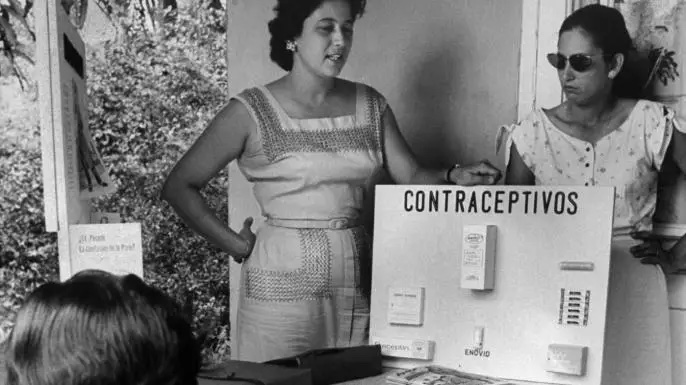Growing up in New York City, I was fairly removed from my Rivera side of the family. I knew the name of my grandfather, Felipe Rivera Ortiz, but that was about it. I had no real idea who his siblings were (I did know there was a brother who had lived in New York), but I did not know where my family came from in Puerto Rico or the history behind my surname.
So as I began to research, I wanted to know more about the surname I carry each day. About 10 years ago, I had a breakthrough in my research thanks to two aunts who knew a bit more about my grandfather and his parents. I was able to learn that my great-grandfather Alejandro Rivera González who was the originally from Toa Alta where my family had lived for about 300 years.
Alejandro had three marriages from which the last one is where my grandfather’s line originates from. His third marriage was to Mercedes Ortiz Marrero and from this line came 10 children, the bulk of Alejandro’s descendants.
As I kept researching more about the family I came to know cousins who had more information as well. An interesting fact that came from my research and their stories was the lack of children/offspring from the Rivera Ortiz generation, specifically from the women who formed the majority of the Rivera Ortiz branch. Learning about this got me interested in wanting to learn more about what could have happened to cause this recent infertility on my dad’s side of the family.
The Rivera Ortiz branch
My grandfather was born in San Juan, Puerto Rico and lived there during the 1940 Census with his parents and siblings. According to the census they were living in La Perla, which is in the Viejo San Juan area, literally built off of the walls of the fortress El Morro.
Listed with Felipe were his parents Alejandro Rivera and Mercedes Ortiz as well as his older siblings Antuliano Rivera Ortiz, Iris María Rivera Ortiz, Manuela Rivera Ortiz, and Francisca Rivera Ortiz. As you can see from the census, out of the five children only two were boys.
Currently, I have not been able to find the family in the 1950 Census.

Digging into the Puerto Rican Civil Registry was able to teach me more about the children of Alejandro and Mercedes. For example, between Francisca and Felipe you can see quite a distance between their ages (13 vs 3) compared to the three older siblings and this is because of the children who died before the census was taken. Between Francisca and Felipe there were three other children, all girls as well:
- Ramona Rivera Ortiz (1931-1933)
- Mercedes Rivera Ortiz (1933-1937)
- Andrea Rivera Ortiz (1934-1940)
Each daughter lived a very short life, with the youngest being two and the oldest being six when they died. The death certificates mention their deaths as meningitis (Ramona), tuberculosis (Mercedes), and gastroenteritis (Andrea). I can only imagine this was fairly traumatic for the family especially with having older children who lived through their childhood but then suffering three deaths back to back to back. Felipe would be the first child since Francisca’s birth in 1928 to survive. Another daughter, Benita, was born after Felipe but died the same year in 1940 from gastroenteritis. Lastly, Antonia Rivera Ortiz (Tía Toña) was born in 1942 and she luckily survived.
La Perla - San Juan, PR
An American photographer at the time named Jack Delano took photos of La Perla depicting what life was like in that part of the city. La Perla is often, and still, referred to as a slum. The living conditions at the time I imagine were less than ideal. This neighborhood served for many as a point of entry into San Juan from their towns of origin. Below are some photos from Jack Delano held in the Library of Congress’ website of La Perla around the time my family lived there in the 1940s. From the photos you can see houses that were built haphazardly where they could, no real streets (mostly made of stone and dirty), people walking around barefoot, and puddles here and there (houses in Puerto Rico were usually built on stilts before to avoid flooding) which could cause harboring of disease and bacteria. I imagine the living conditions at the time contributed to my great-grandparents’ lose of four of their daughters in their childhood.
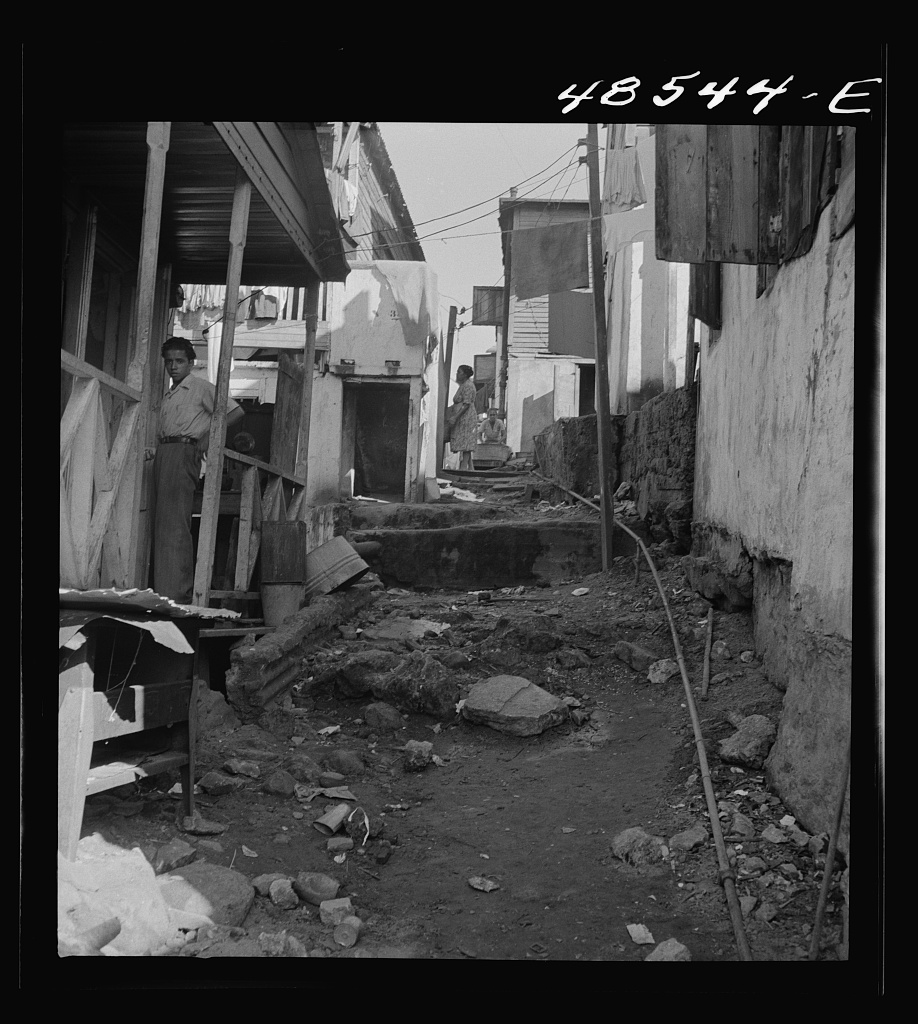
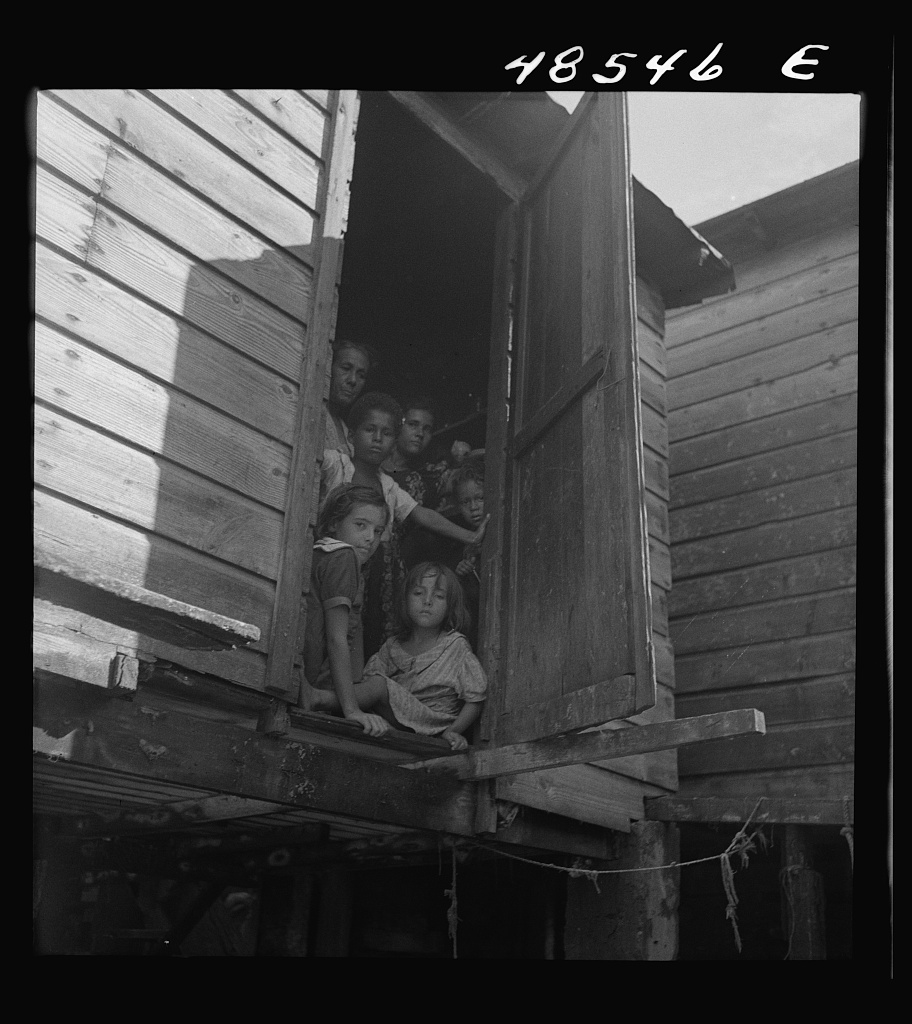
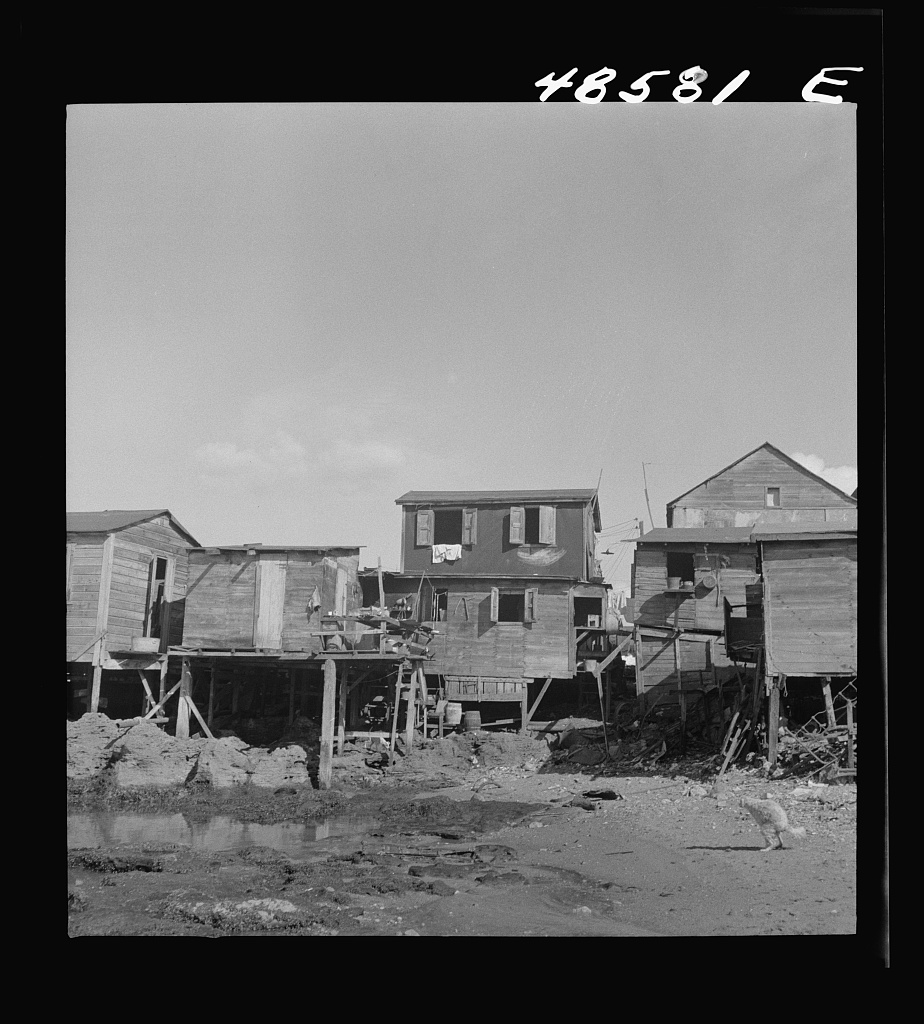
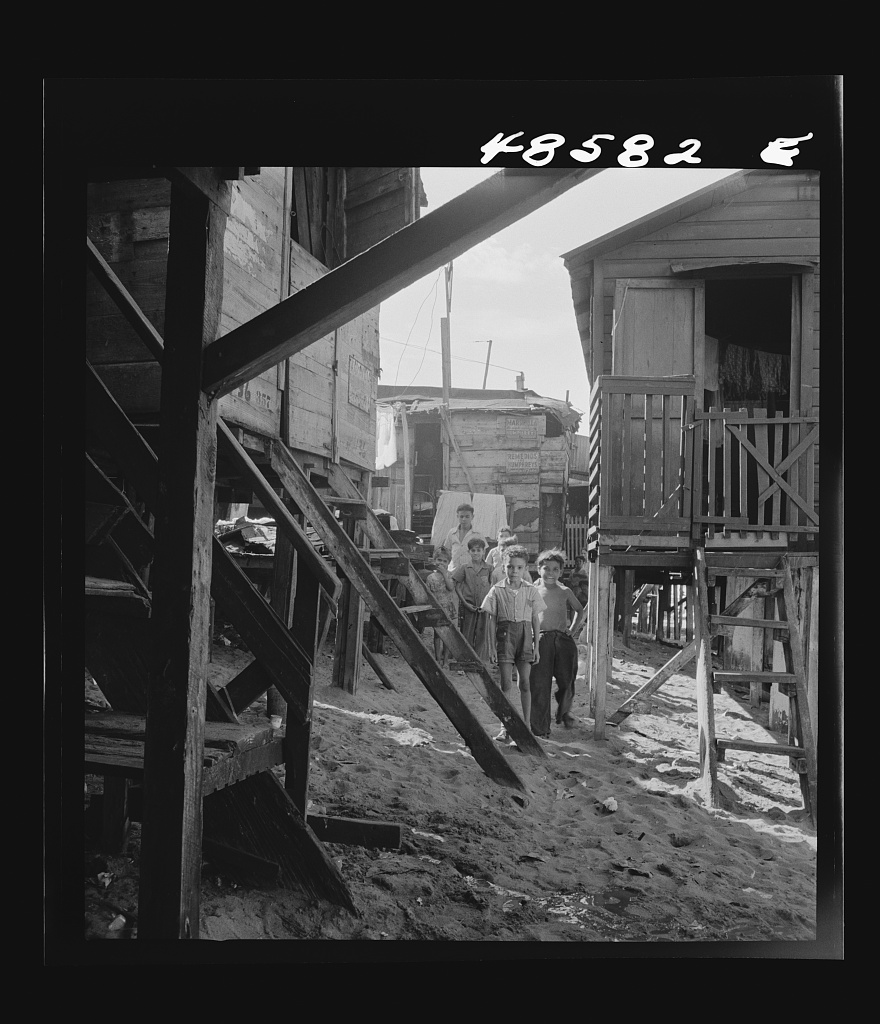
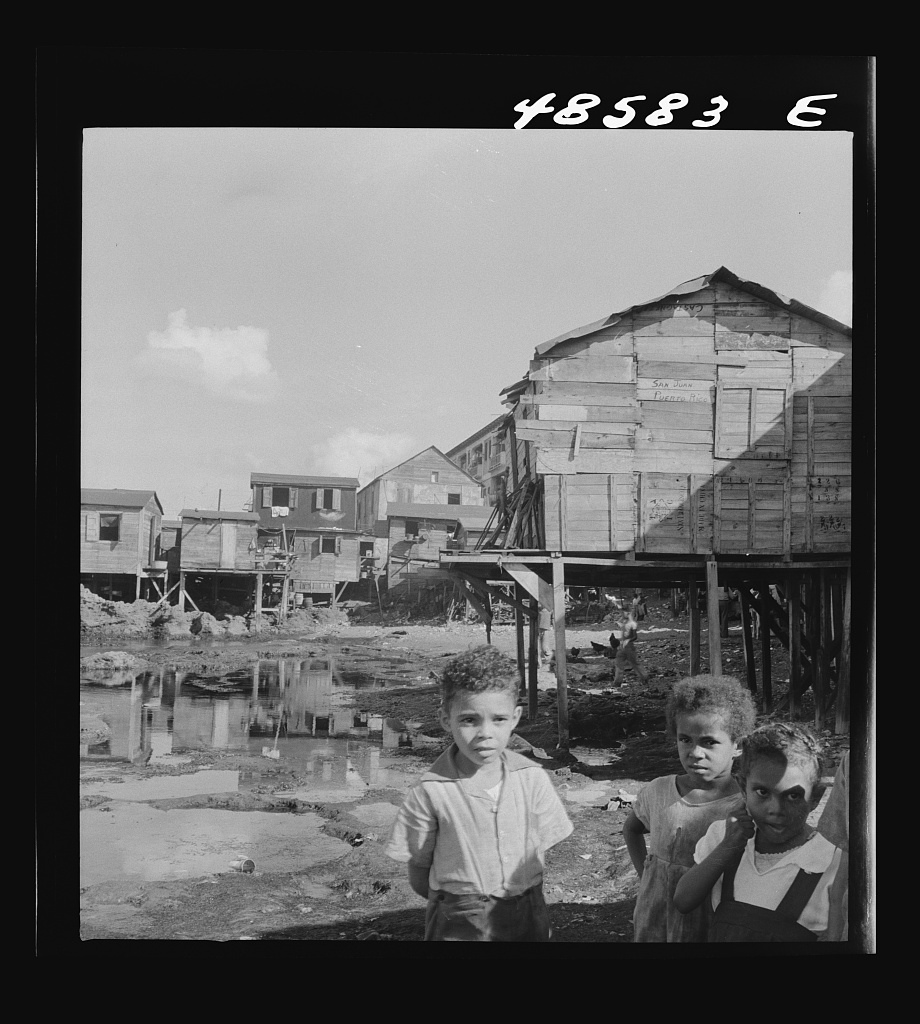
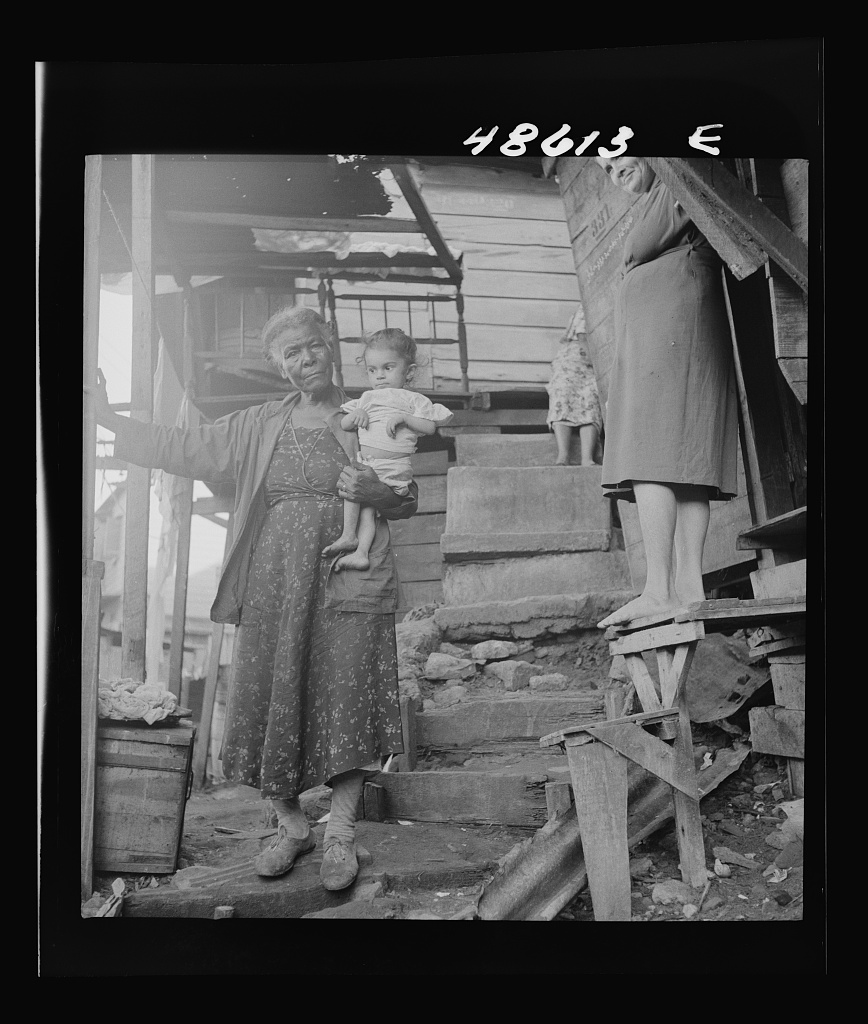
Photo Source: “‘La Perla’ – Photos, Prints, Drawings” Library of Congress (https://www.loc.gov/photos/?q=La+Perla : accessed 10 April 2022).
A New generation
I am not exactly sure how long my family lived in La Perla but I know that at some point (probably by the 1960s) my family had moved out and into another part of San Juan, farther away from the old city walls. Alejandro and Mercedes would raise six children in San Juan; despite moving away from La Perla, Alejandro Rivera, Mercedes Ortiz, and a few of their children are buried in the cemetery right next door – Santa María Magdalena de Pazzi.
For some reason though, amongst the Rivera Ortiz women, many did not have children – from how the stories go, it was not because they did not want to but because they just could not. Below is a chart of all the children on the Rivera Ortiz line and the possible lines of descendants based on what I know about the family. Currently, it is only via Francisca Rivera Ortiz that I am unsure if there were any children.

Since I was raised apart from this family, I am not really sure what caused many of the women to not have children. I know the eldest son Antuliano had children and so did Manuela but Iris María, Antonia, and potentially Francisca did not have any children (known to the family). My own grandfather, Felipe, was the youngest to be able to have children but my interest lies in the two to three women who were unable to have children. If it wasn’t for Manuela’s children for example, the mtDNA haplogroup would have been lost via Mercedes’ descendants since there were no girls to pass it along.
Infertility -
caused or inherited?
One of the biggest questions I have is whether or not this issue of not being able to have children was something that was genetically inherited or something that was caused by an external force? By learning about Puerto Rico’s history, I also learned about not only the forced sterilization that occurred on the island amongst young women and recent mothers in order to control the population, but also the testing of new contraceptives before they were FDA approved amongst women who were none the wiser. Though a widely celebrated feat for women’s reproductive rights and ownership of their bodies, contraceptives have a dark history on the island. It was seen as a way to curb poverty amongst the population boom of WWII. One of the main proponents was Clarence Gamble (of Proctor&Gamble), known now as being an American eugenicist. “Gamble believed that Puerto Ricans and others living in poverty should be wiped out to make room for more ‘fit’ members of the population, and birth control was part of that vision. […] Ultimately, approximately one-third of Puerto Rican women were sterilized—many involuntarily—under policies that pressured women to undergo hysterectomies after their second child’s birth”. [1]
So I must ask myself – were any women in my family subjected to unknown hysterectomies or belonged to the trial cases of birth control?
“Pincus focused on that group of women during clinical trials that recruited in the poorest areas of San Juan and other cities beginning in 1955”. [2] My family did live one of the poorer areas of San Juan and likely were still in these areas in the 1950s. They were also in the right age group for what is now known as “La Operación” (the operation) – a time beginning in the 1930s that sterilized approximately 1/3 of women on the island (making it one of the highest sterilization rates in the world) approved by law in 1937, but repealed in 1960 given staunch Catholic beliefs on the island. [3]
In a conversation with one of Manuela’s daughter, she mentioned that these women were unable to have children because “they were born with their uteruses reversed” – something I had not heard of before. According to an Insider article when I researched this condition, known as “retroverted uterus” or “tipped uterus”, it explains that this is fairly common amongst women and some might go undiagnosed for a majority of their lives. “Although it may sound scary, a retroverted uterus is a common anatomical variation. Approximately one in five women has the condition, so generally, it rarely requires treatment. More importantly, having a retroverted uterus does not have an effect on your fertility or interfere with labor or delivery”. [4] The article goes on to mention how other conditions like endometriosis combined with a retroverted uterus can cause some issues during pregnancy. Apparently, “a retroverted uterus is usually a genetic variation that you’re born with, but there are certain factors that may cause your uterus to shift its position over time. Sometimes, a uterus may be retroverted due to scar tissue or pelvic adhesions”. [5]
Learning this begs me to ask more questions. Could these women have gone in for a check up given pains during menstruation which later got them wrapped up in an unknown sterilization in order to “help them”? Women who went in for la operación were likely fully unaware of the full circumstances of such an operation and/or regretted their decisions later on in life. Given that having a retroverted uterus in a majority of cases does not cause issues with pregnancies, I wonder if that was the limit of our family’s knowledge as to why my Rivera Ortiz great-aunts could not have children but was caused by forces unknown to the family.
Though currently fully not known to us, something almost caused our Rivera side of the family to not have future generations. Genealogically, we do know that the line is limited in possible descendants given the situation of the Rivera Ortiz women. Granted, if these women had wanted to not have children it is within their rights to not do so, but from what I have heard through the stories from various family members, it seems like it was a sore point and brought sadness in the family’s life.
Whether genetics, environment, or forced intervention – this seems to be the only branch of my family to have gone through this. My other branches that either lived out in the rural areas of Puerto Rico or arrived to San Juan but did not lived in La Perla or other slum areas of the city do not seem to have suffered issues of fertility. Which is why I question what happened to this branch for these women to go through this situation. Especially since it seems Antuliano and Felipe had no issues having children, as it seems that men were not targeted for sterilization.
For now I can only speculate what the possibilities and the conditions affecting my 20th century branch of Rivera great-aunts which caused them to be unable to have children..
Cover Photo Source: “The First Birth Control Pill Used Puerto Rican Women as Guinea Pigs,” History (https://www.history.com/news/birth-control-pill-history-puerto-rico-enovid : accessed 10 April 2022); citing: Hank Walker/The LIFE Picture Collection/Getty Images.
[1] “The First Birth Control Pill Used Puerto Rican Women as Guinea Pigs,” History (https://www.history.com/news/birth-control-pill-history-puerto-rico-enovid : accessed 10 April 2022).
[2] Ibid.
[3] “The Dark History of Forced Sterilization of Latina Women,” Panoramas Scholarly Platform (https://www.panoramas.pitt.edu/health-and-society/dark-history-forced-sterilization-latina-women : accessed 10 April 2022).
[4] “What is a retroverted uterus? Why having one won’t affect your ability to get pregnant,” Insider (https://www.insider.com/retroverted-uterus : accessed 10 April 2022).
[5] Ibid.

